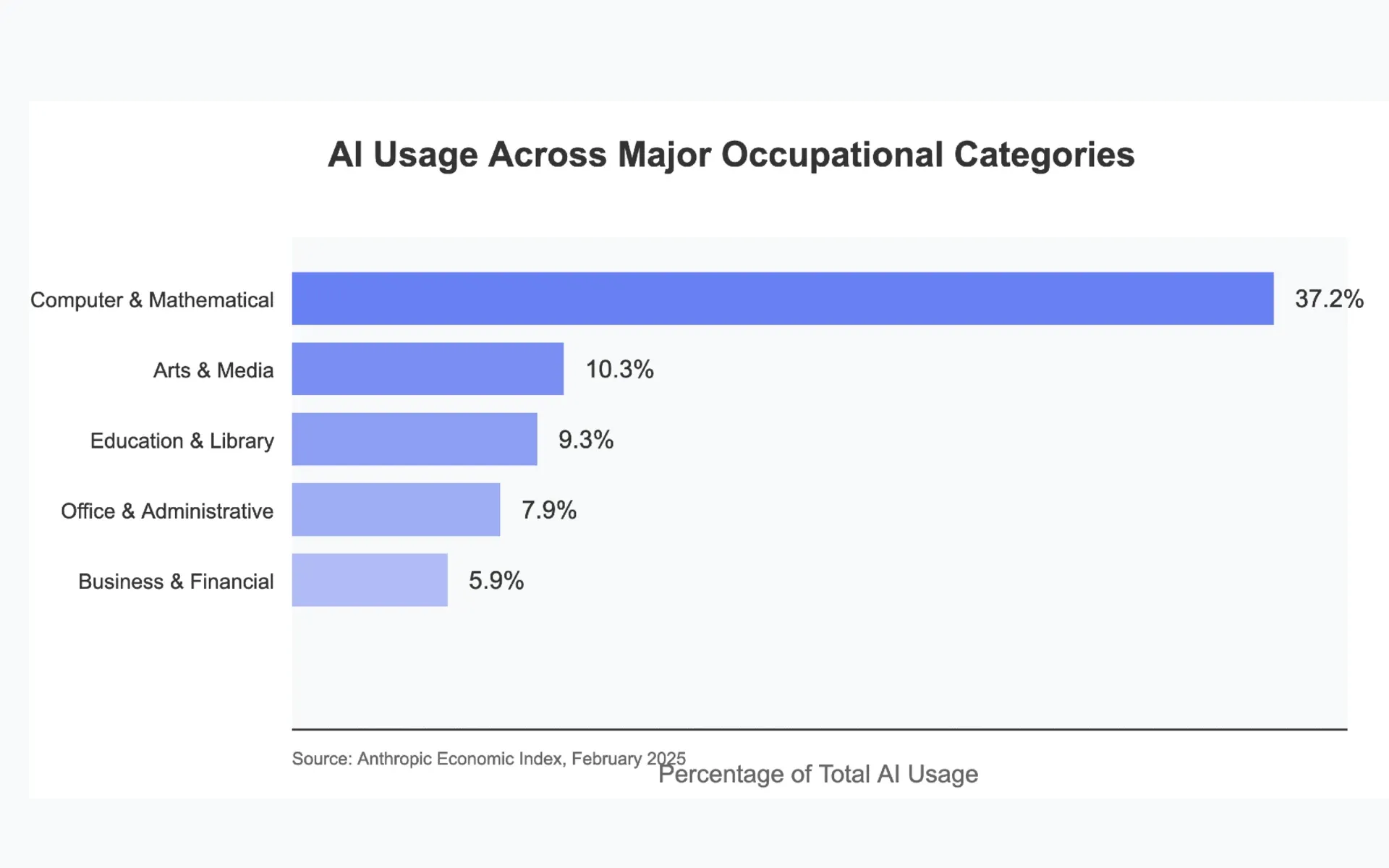Artificial intelligence now used in 36% of occupations, study finds
New research reveals AI is mostly used for software and technical writing tasks, with varying adoption across wage levels.

In a landmark study released today, Anthropic researchers analyzed millions of conversations between users and their AI assistant Claude to provide the first large-scale empirical evidence of how artificial intelligence is being integrated into the workforce.
According to the Anthropic Economic Index, launched on February 10, 2025, AI usage is concentrated primarily in software development and technical writing tasks. The study found that approximately 36% of occupations use AI for at least a quarter of their associated tasks, while only 4% of occupations utilize AI across three-quarters of their tasks.
The research analyzed data from conversations on Claude.ai to map how AI systems are being used across different economic sectors. The study revealed that computer-related tasks see the largest amount of AI usage at 37.2% of all queries, followed by writing tasks in educational and communication contexts at 10.3%.
Kunal Handa, lead researcher at Anthropic and co-author of the study, found that AI use peaks in mid-to-high wage occupations but drops off at both extremes of the wage spectrum. According to the data, both very high-wage occupations like anesthesiologists and low-wage positions like restaurant workers demonstrate relatively low usage rates.
The analysis indicates that AI serves more as an enhancement tool rather than a replacement for human workers. The data shows that 57% of AI interactions involve augmentation, where AI collaborates with and enhances human capabilities, compared to 43% automation, where AI directly performs tasks.
The researchers utilized Clio, a system that enables privacy-preserving analysis of conversations while maintaining user privacy. The study analyzed approximately one million conversations on Claude.ai Free and Pro plans during December 2024 and January 2025.
Alex Tamkin, co-lead author, notes that both the lowest and highest wage percentiles show substantially lower usage rates. Occupations at both extremes of the wage scale exhibit lower AI adoption, which likely reflects either limitations in current AI capabilities or the inherent physical manipulation requirements of these roles.
The research revealed clear patterns in skill utilization. Cognitive skills like Reading Comprehension, Writing, and Critical Thinking showed high presence in AI conversations, while physical skills like Installation, Equipment Maintenance, and Repairing demonstrated minimal presence.
The study found peak AI usage in Job Zone 4, requiring considerable preparation like a bachelor's degree, with a representation ratio of 1.50, indicating 50% higher usage than expected given its baseline distribution. Both minimal preparation roles and highly specialized positions showed lower usage rates.
According to the data, Computer and Mathematical occupations showed the highest associated AI usage rate. Arts, Design, Entertainment, Sports, and Media occupations were second most common, likely reflecting the prevalence of marketing, writing, and content generation tasks.
Education occupations were also highly represented, including under Educational Instruction and Library Occupations as well as subject-specific occupations such as Life, Physical, and Social Science Occupations. Unsurprisingly, occupations requiring physical labor were least present.
The researchers acknowledge several limitations in their study, including the possibility that their sample is not representative of usage across longer time windows. Additionally, the analysis cannot reveal how Claude's outputs are actually used in practice.
The research team has made the dataset publicly available to enable further analysis by other researchers. The Economic Index will be updated regularly to track changes in AI adoption patterns across different sectors of the economy.
The complete findings are available in a paper titled "Which Economic Tasks are Performed with AI? Evidence from Millions of Claude Conversations," authored by researchers from Anthropic including Handa, Tamkin, and colleagues.

